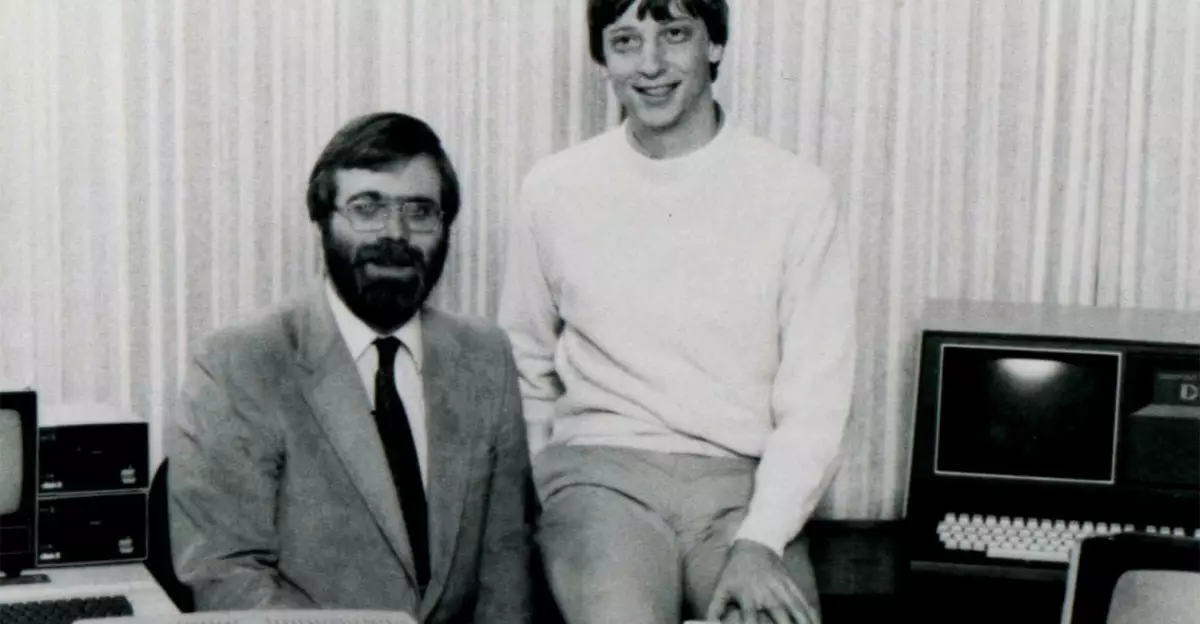In 1975, the technological landscape was forever altered by the inception of Microsoft, a company founded by the brilliant minds of Bill Gates and Paul Allen. Initially dubbed “Micro-Soft,” the mission was crystal clear: to innovate software solutions tailored for the nascent field of personal computing. This was an era dominated by bulky hardware and rudimentary operating systems, but Gates and Allen were quick to identify the transformative potential of microprocessors. Their first project, Altair BASIC, not only marked the onset of Microsoft’s remarkable journey but also set the stage for an impending technological renaissance.
Gates and Allen’s partnership cultivated a rich synergy, propelling Microsoft onto the world stage with an essential deal in the early 1980s: providing an operating system for IBM’s groundbreaking personal computer. This would ultimately lead to the creation of MS-DOS, which would dominate the market and cement Microsoft’s dominance in the software domain.
Paving the Way with Windows
As the 1980s progressed, Microsoft did not merely rest on its laurels; it ventured into uncharted waters with the introduction of Windows in 1985. This Operating System wasn’t just an upgrade but rather a bold reimagining of how users would interact with their PCs. With a graphical user interface layered over MS-DOS, Windows revolutionized accessibility and usability in computing. However, it was the launch of Windows 95 in 1995 that created a cultural phenomenon. The excitement surrounding its midnight release saw avid fans queuing outside stores, reflecting a collective yearning for connectivity and productivity.
Windows 95 was groundbreaking, introducing features that have become ubiquitous in today’s computing environment: the iconic desktop, File Explorer, and the Recycle Bin. Its impact reached far beyond aesthetics; it fundamentally changed how individuals interacted with technology, allowing an unprecedented range of professionals and novices alike to harness the power of PCs.
Office: The Backbone of Productivity
While exploring the realms of operating systems, Microsoft expanded its vision further by developing Office, a productivity suite that would become a cornerstone of business operations worldwide. Originating in 1989 for the Mac and swiftly making its way to Windows, Office transformed professional environments, solidifying its role as an essential toolkit. With applications designed to streamline tasks, from document creation to complex data management, it became the lifeblood of countless organizations. The suite has evolved remarkably, now offering cloud-based functionalities that make collaboration seamless across the globe.
The success of Windows and Office served as a launchpad for Microsoft to explore diverse avenues, from gaming to cloud computing. The Xbox console, introduced in 2001, was a foray into entertainment that has grown into a thriving ecosystem. Moreover, with Azure’s launch in 2008, Microsoft shifted its focus toward cloud solutions, positioning itself favorably against competitors in a rapidly changing tech landscape.
A Bold Leap into the Future
Today, as Microsoft commemorates its 50-year anniversary, it stands on the precipice of a new era, fueled by artificial intelligence aspirations. The company’s ambitious foray into AI technology aims to enhance every aspect of its existing products—from Windows and Office to its cloud services. The ongoing integration of AI promises to redefine user experiences, giving rise to smarter, more intuitive technologies that can adapt to individual needs.
Microsoft’s Surface devices have emerged as a testament to its innovative spirit, embodying a blend of hardware and software that showcases the best of what Microsoft has to offer. Launched in 2012, Surface signifies more than just a product; it is a manifestation of Microsoft’s commitment to defining the personal computing experience of the future. The recent unveiling of Copilot features signifies an ongoing evolution, promising to position Microsoft at the forefront of the AI revolution.
On this momentous occasion at their headquarters in Redmond, Washington, the reflections of both past and present Microsoft pioneers serve as a reminder that while the company has rapidly advanced over five decades, it is the unyielding pursuit of innovation that will dictate its ongoing legacy in the tech landscape of tomorrow.


Leave a Reply